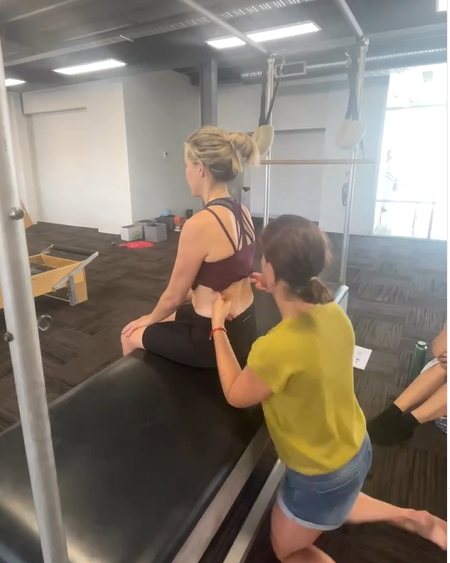You know the saying, ‘too much of a good thing’? Well, it’s pretty much universal. Too much of anything will have a negative effect on you eventually, no matter how ‘good/healthy/beneficial’ it claims to be. In the pursuit of fitness and well-being, many individuals feel compelled to push their bodies to extremes, believing that punishing workouts are the only path to progress.
However, in this blog post, I will explore a different perspective.
Let’s delve into the concept of gentle strength and why we don't need to subject our bodies to punishment for exercise to be meaningful and effective.
By embracing a more balanced and compassionate approach to movement, we can foster a healthier relationship with our bodies and achieve sustainable results. Not sure if embracing gentle strength is for you? Here are three considerations to think about:
Rethinking our Exercise Motivations
While societal influences and the "no pain, no gain" mindset can help to build resilience and grit—not bad things—most people can’t tell the difference or don’t care about the difference (to be more exact) between pain because your muscles/joints are working and pain because something is wrong. The first type of pain is manageable and can bring you closer to your health and fitness goals, the second type of pain is your body communicating that it’s had enough, that you’ve gone beyond your functional threshold, and if you keep pushing you’ll actually be further away from your goals - think injuries and inflammation.
The Long Term Benefits
Maybe the term gentle strength sounds too ‘soft’? Perhaps we should call it functional strength instead. Developing functional strength, flexibility, and mobility without punishment will help to achieve sustainable results. Let’s start thinking today about how we want to be moving and feeling when we’re 70 years old.
Nurturing Recovery and Rest
Do you take rest days? Be honest. What do your rest days look like? A gentle 5 km run? That is not a rest. Rest days and recovery practices help to prevent burnout and support overall well-being. Exploring various recovery methods such as release work, foam rolling, meditation, or gentle movement will further aid in muscle repair and relaxation.
Did you know that when we work out excessively or with too much intensity, it can have a significant impact on our nervous system?
Intense or prolonged workouts can trigger the activation of the sympathetic nervous system, which is responsible for our "fight-or-flight" response. This can lead to an increase in stress hormone production, such as cortisol, resulting in heightened alertness, elevated heart rate, and increased blood pressure. In this day and age, with our already busy lives and stressful jobs (which trigger the sympathetic nervous system), we might benefit from actually trying to use more of our movement time to reconnect with our parasympathetic nervous system ("rest and digest" system, which is responsible for promoting relaxation, recovery, and overall well-being). Excessive or intense workouts can disrupt the balance between the sympathetic and parasympathetic systems, leading to decreased parasympathetic activity.
Both Pilates and DNS (Dynamic Neuromuscular Stabilisation) emphasise the mind-body connection, promoting awareness and intentional movement. By incorporating breathwork, mindfulness, and precise movement patterns, these practices engage the parasympathetic nervous system, triggering a relaxation response. This helps to counterbalance the effects of chronic stress and promote overall nervous system balance.
It doesn’t mean Pilates and DNS are easy. I’m not saying you won’t sweat. I find that many clients actually struggle to focus on their body in a precise and meaningful way, and so when they do, it’s hard, it’s a challenge, it’s uncomfortable for them, and as I always say ‘change doesn’t happen from comfort’. And there's nothing comfortable about Pilates and DNS. In a good way ;-).
Not quite ready to throw away the running, crossfiting, trx’ing and high intensity spin classes? Well don’t. We love what we love right?! But how about ADDING IN some gentle strength or functional strength work. Something to support your fitness pursuits, but more importantly, something to support your best version of your 70 year old self! We only have one life, one body. Look after it.





























